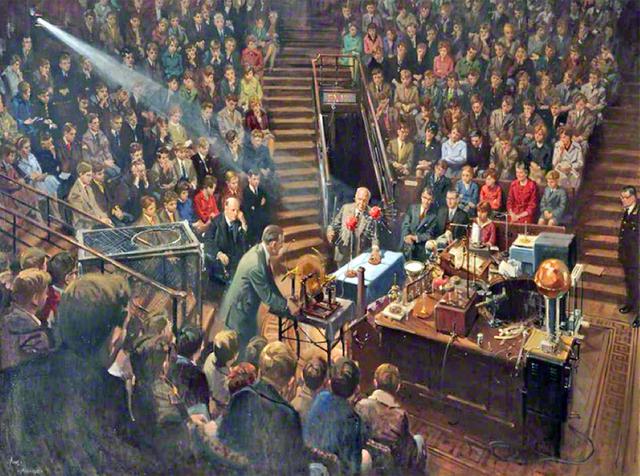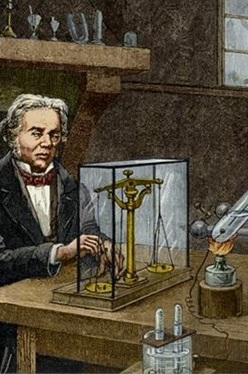Lessons from the Annual Lectures: Gemma Walder’s view
- Written by
- Gemma Walder
- Added
- December 18, 2014
Finding the reward centre

The Faraday Theatre, famously known as the place where some of the greatest scientists weren’t afraid to walk in with new ideas and experiments that changed the world, was the perfect location for the 2014 Annual Fundraising Lectures.
Following in the Institution’s footsteps the day kicked off focusing on science. Phil Barden let us take a sneak peak into what’s actually going on inside our brain when making a decision and the value it can bring to marketing. There is a science behind why we buy and as a species we’ve come along way from our caves and clubs. These days our goals of status and power have turned to brands: watches, cars, hand bags. Barden also focused on our reward and pain centre, with pain being triggered by price. However if the reward can outweigh the pain this will equal net value. Similarly if you wince at the checkout at Boots it’s fine because as soon as you realise you’ll receive 200 ‘free points’ that pain disappears. Why? Because you’re one step further to having free shopping at Boots. Like brands, we fundraisers should be making that connection, we need to find that reward centre.
A lonely, painful journey
Jen Shang explored the greatest challenges that philanthropists will face in the next decade. At the moment they do not take enough risks. The emotional journey that philanthropists go through is lonely and painful, they question their meaning and dreams are shattered. There are five steps to overcoming risk in decision-making: define, assess, recognise, cope, optimise. It’s our job as fundraisers to know that this journey won’t be linear, we need to be patient and understanding, predict the risks, stop asking the easy questions and feel the pain they feel.
Stop missing opportunities
We then moved on to peppermint creams. Jeremy Hughes gave us an insight into his scouting days and how as fundraisers we shouldn’t miss any opportunities. He encouraged us to rattle the cans, be bold, positive and innovative. Hughes also explained that fundraising should be the centre point in a charity but we’re not very good at linking the fundraising to the cause. The poppies at the Tower of London are a powerful example of how donors can fit something tangible to their donation. He also stated that in this sector we have missed so many opportunities and it needs to stop, we need to start changing society’s attitude to fundraising. He encouraged us to be bolder, be crazy and rattle (plus nip to the nearest shop for a peppermint cream).
Blood, sweat and tears
Amanda Seller then talked about changing a culture. She quoted the High Commissioner’s first words to her ‘It’s great to have you here Amanda, but there’s no pressure, we don’t expect very much’. She emphasised that changing a process-orientated culture took ‘blood, sweat and tears’ and was incredibly challenging, but with a 38 per cent growth it showed that if you lay your foundations with trust you can build lasting and effective support.
Cultural differences
Salla Saarinen focused on how fundraisers should be like mosquitoes. They are small yet make a lot of noise. Similar to Hughes, we need more rattle and to fill the silences. Saarinen focused on cultural differences and getting to complete clarity whilst negotiating. We all need to learn to build trust, credibility, fairness and mutual respect amongst our colleagues, because as famous Mark Darcy once said to Bridget Jones we all want to be loved ‘just the way we are’.
Leading to more supporters
Giles Pegram CBE also spoke about collaboration within a team and shared with us the results of the NSPCC’s ‘full stop’ appeal and how a transformational appeal can have a lasting effect within an organisation. There were five key reasons why the NSPCC could move forward after the full stop appeal: team, thinking, leadership with credibility, heightened awareness of the cause, which led to more supporters.
From nonprofit to profit for purpose
Alan Clayton then had us on the edge of our seats with two essential words that can determine success: why and how. The start should come from changing ourselves from nonprofit to profit for purpose, ultimately because purpose will keep you going. He implored us to focus more on more clarity than talk, change our language from jargon to actual words that can inspire people because for fundraisers inspiration is the bottom line.
Culture and strategy
Richard Taylor launched us into a whole new arena in the late afternoon: brand and growth. He is right in saying that as a sector we haven’t got it right just yet, at the moment the big brands are ‘nibbling at our audience’. We need to have more imagination because our donors are also consumers. He said we should focus on our cultures and use their origins to be stronger and more innovative when telling the greatest stories because ‘culture eats strategy for breakfast’. Taylor also focused on our lack of digital understanding and rightly reminded us that this time last year we didn’t think social media would raise money. Then the no-make-up selfie and the ice bucket challenge proved that this is not true, but we still need more innovation in order to make the digital world a successful platform.
Peter Pan
Paul Farthing asked us to uncover our sense of self and why we are at our organisations, where do we fit in? Knowing this can help drive cultural change and challenge limiting beliefs, which should be driving the tomorrow. Like Peter Pan we all need to know where our shadows are and the impact it will have. Farthing honed in on asking us to be engaging, stay resilient and deliver.
Stories stir emotions
Iain McAndrew from the Cystic Fibrosis Trust spoke about being brave and how the Trust found their anger again. He re-told that powerful moment when they first started on their fiftieth-year plans when one of their colleagues with cystic fibrosis said ‘I’m so jealous’ this was echoed in the ‘no party campaign’ – not celebrating being 50 years old until everyone can. Iain also spoke about telling stories and how it’s been embedded in the culture at the Trust, including the recent appointment of Oli Lewington as engagement director of the new engagement team because ‘stories stir emotions, emotions forge connections’. Iain left us by saying it’s been challenging, but ultimately this new transition brought back the ‘why’.
Next up was Jacob Rolin who came to play the jester, as Jesters can tell the truth in the court without losing their heads. He asked us to stop calling ourselves the nonprofit sector because why would you advertise yourself as something you’re not? We need to be the change sector and we need to start leading that change by testing and failing, because ultimately we are all investing in a better tomorrow for the generations to come. It’s also interesting that Rolin referred to himself as a jester because originally the jester’s function was to ‘recite a tale’.
Alan Clayton, Ken Burnett and Tony Elischer delivered the final chapter of the day on connecting, giving and winning.

Alan gave us a beautiful imagery that fundraisers need to be the grit in the oyster because irritants can turn into greatness. We need to be ourselves when communicating; we should be authentic and be vulnerable. Ken elaborated on this by emphasising we need to use words more effectively, because words are sometimes all fundraisers have. He also emphasised that we have the best stories in the world so we need to be the best storytellers to spark that connection with our donors.
Tony led us on to giving and that time, money and goods don’t work anymore. Instead we should be focusing on voice, influence and life change because we need to be in tune with people’s lives. We all change on a yearly basis, if we’re able to give the right things to our donors at the right time they’ll bring their friends.
Ken then rightly told us, that our customer service is crap. The start of our donor’s journey should be exciting like your shopping experience. Ken stressed that in order to keep our donors for longer we need to be famous for fast, frequent, fabulous feedback. Again this reiterates my Boots point, I’m a loyal Boots customer and certainly not thinking of shopping anywhere else… I’ve got too many points waiting for me. If we have the best customer service then we’re winning.
Investment then became the final thought for the day, the investment in people. Tony explained that we’re in a crisis; there simply isn’t enough talent in the charity sector. He stressed that we really need to start nurturing and developing those with passion and skills… these are what create winning teams and can help us embed that mentality of being the sector of profit for purpose.
I think I speak for everyone who was in that room by saying that Faraday isn’t the only one that can lead an experiment that will change the world, we all can. And it starts with us all simply thinking… if not me, then who? If not now, then when?
















